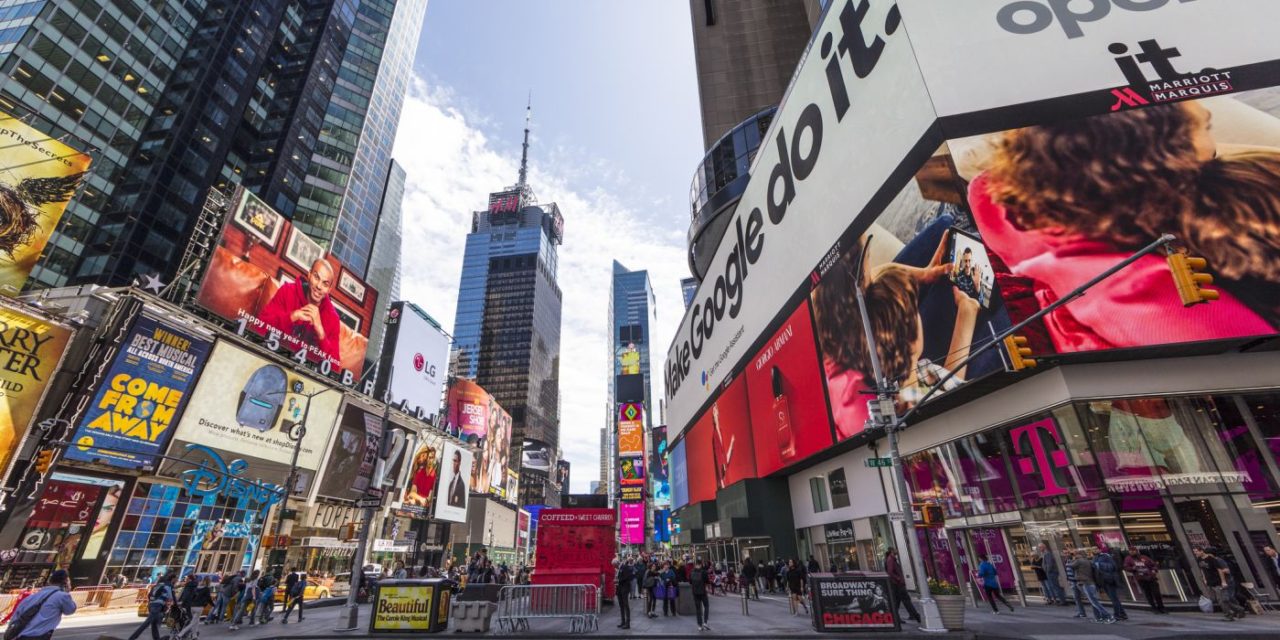Total global ad spend has been less than expected so far in 2019 but a number of events next year should help industry growth pick up the pace.
That’s according to data from the World Advertising and Research Center (WARC) suggests there will be an overall rise of 2.5% in marketing spend by the end of this year to a total of $618.7 billion. This marks a downgrade from WARC’s February projection of 4.3%. The downgrade is driven by a slowdown in consumer spend and Gross Domestic Product (GDP), WARC said Thursday.
It’s a brighter picture for 2020 however, where ad spend is set to grow 6% to $656 billion, driven in part by the U.S. Presidential Election and the Olympic Games, which will be held in Tokyo.
Spending on internet ads — mainly on Alphabet-owned YouTube and Google, as well as Facebook — is set to make up more than half of all global spend for the first time next year, WARC said in May.
Advertisers are set to spend 29.9% of their dollars on TV, with 23.1% going to Alphabet-owned Google and YouTube, while Facebook is set to take 12.9% of total ad spend. Amazon, which has a growing ad business, is projected to take 2.5% of all ad dollars in 2020.
Shift in strategy
The figures come as some businesses shift their ad spend strategies. Booking Holdings, which spent $1.19 billion on performance marketing on the second quarter of 2019 — spend which largely goes to Google – said in August it had increased its spend on TV, online video and online display ads to $175 million, up 41%. Performance marketing refers to online ads where the effectiveness can be measured, for example from someone who clicks an ad on Google’s search results page, through to a booking page and finally to a sale.
Adidas, meanwhile, said last week that it realized it had over-invested in digital advertising, after using econometric modelling to see how ads were driving sales, according to a report in industry publication Marketing Week.
Procter & Gamble, one of the largest ad spenders in the world, has revamped its marketing in recent years to focus less on “mass clutter” and more on creative partnerships. It also now knows more about its consumers, having a database of 1.5 billion people, its chief brand officer Marc Pritchard said this month. This means it has to rely less on the data from the “walled gardens” Google and Facebook, and can better understand how many times a consumer has seen the same digital ad in different place, for example.
In terms of ad spend by sector, financial services is set to grow the most in 2020, up 11.8% to $53.4 billion, followed by household goods set to reach $31.5 billion, up 10.5%. The retail sector will see the slowest growth in ad spend, up 2.6% to $65.4 billion, according to WARC.
The ad spend picture was very different almost a decade ago. In 2010, 34.1% of ad spend went on TV spots in 2010, and 34.9% to newspapers. Alphabet took 6.2% and Facebook made up just 0.4%. Amazon’s ad business took less than 0.1% of ad spend.

